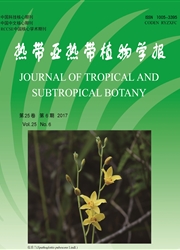

 中文摘要:
中文摘要:
为探讨样地扰动对生态学野外控制试验的影响,在介绍一个较大型森林降水格局野外控制试验的基础上,分析了试验平台建设的设施对土壤化学性质和净氮(N)转化速率所产生的影响。结果表明,整个约0.7hm2样地在2012年5—9月间的土壤有机C(SOC)、全N(TN)、硝态N、铵态N、微生物生物量C(MBC)、净N矿化速率和硝化速率均表现出一定的时空变异,但设施对SOC、TN、硝态N、铵态N和净矿化速率的影响统计学检验不显著;而设施建设和样方周边挖隔离沟对净N硝化速率在刚完成平台建设时有显著影响(尸〈0.05),但恢复3个月后虽仍有差异,但统计学检验已不显著。这些提示了在分析和解释降水处理对净N硝化速率的影响效应时,应注意设施效应和坡位差异的潜在影响。
 英文摘要:
英文摘要:
In order to understand facility effects on field control experiments for ecological studies, based on introduction of a relatively large field controlled precipitation pattern change experiment for forest ecosystem, the facility effects on soil chemical properties and net nitrogen transformation rates were analyzed. The results showed that soil organic carbon (SOC), total nitrogen (TN), nitrate nitrogen, ammonium nitrogen, microbial biomass carbon (MBC), net N mineralization rate (NMR) and net N nitrification rate (NNR) all varied spatially in a 0.7 hm2 sampling area from May to September, 2012. The facility effects on SOC, TN, nitrate-N, ammonium-N, MBC, and NMR were not statistically significant. In contrast, the facility effects on NNR were statistically significant (P 〈 0.05) after the installation of experimental facilities. But such facility effects on NNR became insignificant statistically after restoration for three months, although some differences still existed among treatment types. These implicate that facility effects and slope position influences need be paid attention while analyzing the precipitation change effects on NNR in experiment.
 同期刊论文项目
同期刊论文项目
 同项目期刊论文
同项目期刊论文
 期刊信息
期刊信息
